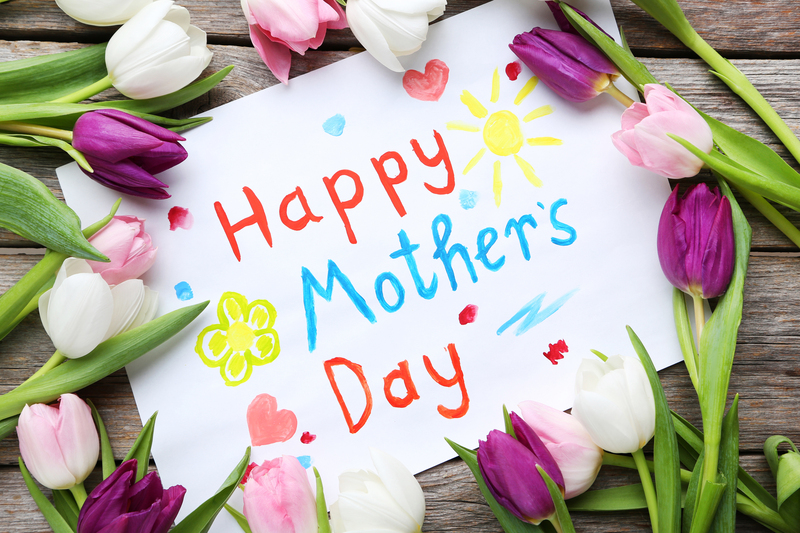Exploring the Meaning Behind Your Birth Flower
Posted on 17/08/2025
Exploring the Meaning Behind Your Birth Flower: A Deep Dive into Floral Symbolism
Have you ever wondered what your birth flower says about you? Much like birthstones, these special blossoms hold unique meanings and fascinating histories tied to your birth month. This comprehensive guide invites you to explore the symbolism, history, and significance of each birth flower, and discover how the language of flowers can add a new layer of meaning to your life story.

Why Learn About Your Birth Flower?
Understanding the meaning of your birth month flower goes far beyond simple curiosity. Flowers have long been used to convey emotions, communicate subtle messages, and celebrate milestones. In the Victorian era, giving or receiving a certain bloom could symbolize hope, remembrance, or love unspoken. Today, knowing the meaning behind your birth flower can help you:
- Connect with heritage: Many cultures attach unique significance to different blooms.
- Give more meaningful gifts: A bouquet aligned with someone's birth flower makes any occasion extra personal.
- Decorate intentionally: Incorporating your flower into home decor or events adds symbolic richness.
- Understand yourself better: Discover what your birth flower reveals about your traits and personality.
The Birth Flower Chart: Month-by-Month Guide
Here's a comprehensive overview of each month's birth flower, including their meanings and why they've earned their place in floral tradition.
January: Carnation and Snowdrop
- Carnation: Known for its ruffled beauty and long vase life, the carnation represents love, fascination, and distinction. Different hues symbolize various sentiments--for instance, pink for motherly love, red for admiration, and white for pure love and good luck.
- Snowdrop: One of the first flowers to emerge in late winter, the snowdrop stands for hope and rebirth. Its delicate white petals are often seen as a sign of optimism in difficult times.
February: Violet and Primrose
- Violet: Tiny yet vibrant, violets are associated with modesty, virtue, and devotion. In ancient Rome, violets were used in love potions, further cementing their aura of romance.
- Primrose: Symbolic of young love and new beginnings, the primrose's bright petals signal spring's imminent arrival.
March: Daffodil
- Daffodil: Cheerful and radiant, daffodils symbolize new beginnings, rebirth, and unrequited love. Their annual reemergence at winter's end aligns perfectly with themes of hope and renewal.
April: Daisy and Sweet Pea
- Daisy: The simple daisy is a symbol of innocence, purity, and loyal love. Its bright, open face is associated with the joy of sunshine and new life.
- Sweet Pea: With their delicate fragrance and pastel hues, sweet peas stand for blissful pleasure and gratitude, making them a favorite for congratulatory events.
May: Lily of the Valley and Hawthorn
- Lily of the Valley: Featuring bell-shaped, dainty blooms, this flower is connected to purity, humility, and a return to happiness. It's often seen at weddings for its romantic and jubilant message.
- Hawthorn: Also known as the mayflower, hawthorn represents hope, supreme happiness, and protection.
June: Rose and Honeysuckle
- Rose: Perhaps the most iconic flower, roses stand for love and passion in all their forms. Each color carries a distinct connotation: red for love, yellow for friendship, white for innocence, and pink for gratitude.
- Honeysuckle: This sweet-scented climber is a symbol of devoted affection and the bonds of love that withstand the test of time.
July: Larkspur and Water Lily
- Larkspur: Spiky and flamboyant, larkspur is linked to positivity, dedication, and strong bonds of love. Each color variant holds its own special meaning.
- Water Lily: Floating serenely on ponds, the water lily evokes purity and enlightenment, as well as emotional balance.
August: Gladiolus and Poppy
- Gladiolus: With its spear-shaped leaves, the gladiolus stands for strength of character, integrity, and remembrance. It also suits celebrations of infatuation and admiration.
- Poppy: Often seen in red, poppies signify consolation, imagination, and peace, having become an enduring symbol of remembrance.
September: Aster and Morning Glory
- Aster: Named after the Greek word for "star," asters suggest wisdom, faith, and valor, making them a sign of deep emotional connection.
- Morning Glory: These trumpet-shaped blooms represent affection, mortality, and the fleeting beauty of life, as they close up within a day.
October: Marigold and Cosmos
- Marigold: Bright and bold, marigolds are symbolic of passion, creativity, and the power of the sun. They are frequently used in celebrations of life across the globe.
- Cosmos: These gentle blooms suggest harmony, order, and tranquility, providing a sense of calm as seasons change.
November: Chrysanthemum
- Chrysanthemum: Revered in Asia as a symbol of longevity, joy, and loyalty, chrysanthemums also represent friendship and abundance in Western cultures.
December: Narcissus and Holly
- Narcissus: This winter bloom represents purity, sweet self-love, and good wishes. It brightens chilly days with hopeful cheer.
- Holly: Evergreen holly is linked to protection, joy, and festive energy, making it perfect for winter celebrations.
The Language of Flowers Through History
The tradition of sending hidden messages with blooms dates back thousands of years. In Victorian England, floriography--the language of flowers--allowed lovers and friends to communicate emotions that were often left unspoken. Each flower and even its color carried a secret meaning, carefully decoded by the recipient.
Today, the meaning behind your birth flower continues to offer a unique insight into personality, destiny, and heritage. From ancient mythology to contemporary gift-giving, the symbology of our birth flowers connects us to centuries of cultural tradition.
How to Use Your Birth Flower in Modern Life
- Celebrate Milestones: Incorporate your birth bloom in birthday decor, party favors, or even wedding flowers for a personalized touch.
- Gift Giving: A bouquet featuring the recipient's birth flower shows thoughtfulness and attention to detail.
- Creative Projects: Use your floral symbol in jewelry, tattoos, or artwork for a deeply personal statement.
- Gardening: Planting your birth month flower creates a living reminder of love, growth, and personal meaning.
Birth Flower Meanings and Your Personality
Many people believe that the symbolism of your birth flower also reflects your personality traits or life path. For instance:
- Carnations (January): If you have a carnation as your birth flower, you may be loyal, loving, and unafraid to stand out.
- Daffodils (March): You're likely to be cheerful, optimistic, and resilient, bouncing back just like spring blooms.
- Roses (June): Rose-people are passionate, devoted, and value deep connections.
- Chrysanthemums (November): You might be joyful, friendly, and steady, offering warmth in every season.
Whether you fully believe in these personality ties or simply enjoy the tradition, exploring your birth flower's meaning can add another layer of self-discovery and celebration to your year.
Choosing Gifts by Birth Flower
If you're searching for a unique, emotional gift, selecting a bouquet or keepsake tied to someone's birth flower can make any gesture even more memorable. For example:
- January birthday: Choose a bouquet of pink and white carnations to celebrate enduring love.
- April birthday: A bunch of daisies is perfect for a friend who brightens your days with their innocence and joy.
- September birthday: A star-shaped aster arrangement speaks to wishes for wisdom and valor.
Additionally, items like personalized jewelry, candles, or even scented bath products featuring the birth flower bring the same meaningful touch.

Frequently Asked Questions about Birth Flowers
1. What if someone has more than one birth flower?
Some months, such as January and December, have more than one birth flower per month. This simply gives you more options to explore and enjoy! You can choose the bloom that resonates most with you--or use both for special occasions.
2. Do the meanings of birth flowers vary by culture?
Yes, the exact meaning of each birthday flower can differ across regions and traditions. For instance, chrysanthemums are a symbol of celebration in some Asian countries but are associated with mourning in parts of Europe. Exploring different interpretations adds depth to your understanding.
3. How can I find my birth flower if I was born on the cusp of two months?
If you're born near the end or start of a month, feel free to choose the flower from either month. Many people embrace both, giving extra personality and flair to their personal symbolism.
4. Can I use birth flowers for astrology or spiritual rituals?
Certainly! Many people incorporate flowers by birth month into their spiritual or astrological practices, such as meditation, altar building, or energy work. The symbolic meaning can enhance your focus and intention.
Conclusion: Embracing the Story of Your Birth Flower
The meaning behind your birth flower offers a delightful blend of tradition, symbolism, and personal insight. Whether you seek to honor your own birth month or give a gift that resonates on a deeper level, these blooms carry stories that last for generations.
The next time you see your birthday flower blooming in a garden, decorating a celebration, or featured in art, recall its history and the wishes it conveys. By weaving the tales of your birth flower into daily life, you add beauty, intention, and deeper meaning to each new chapter of your journey.
Explore the language behind your birth month flower, and let its timeless message blossom in your heart.
Latest Posts
Exploring the Meaning Behind Your Birth Flower
Crafting the Perfect Environment for Hydrangeas
A Journey into the Meaning of Monthly Birth Blossoms





